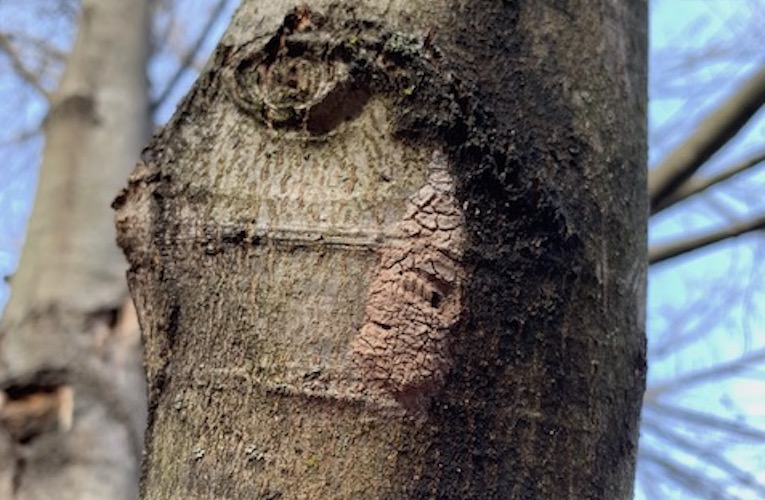
Here in NJ, we had an unseasonably warm day and I went out to visit my slumbering garden. Instead, I noticed a spotted lanternfly (SLF) egg mass on the trunk of my Autumn Blaze maple. Luckily, I know enough about identification and treatment that I immediately scraped it down and destroyed the 30 to 50 eggs that would have emerged in May as nymphs ready to grow into adults by summer.
As I started to write this story, I decided to give my tree a more thorough look. I’m almost embarrassed to say I found not one, not two, but five more egg cases! I scraped down two more by climbing on a small ladder, but the other three will require breaking out the tall ladder and perhaps involving my 6’2″ son.
The irony is that, while SLF first made a noticeable appearance in my town last summer, I saw just a very few adults in my own yard. But apparently it was enough to lay about 300 eggs—and that’s only counting the ones I’ve found. SLF will lay eggs on many surfaces (trees, decks, houses, outdoor equipment, rocks, etc.) but I haven’t found any in other places—yet.
But perhaps there’s a reason they targeted my maple. According to Penn State Extension, researchers have repeatedly observed strong host preference for specific tree species. In 2020, more than 200 trees were counted for SLF in a 0.1-square-mile shopping center and while only 31% of the trees were red maples, they held over 94% of the SLF population. Five percent of SLF were found on pin oak, callery pear, sycamore, sweet gum, and zelkova combined; while just 1% were found on honey locust, Yoshino cherry, and crab apple combined. (My prairie fire crab apple, located just a few yards from my maple, has no egg masses that I can see.)
Since SLF eggs are laid in the Fall and overwinter, now is the last chance to identify and destroy egg masses before the first instar nymphs hatch in mid-Spring. With leaves still off the trees and weather getting warmer, it’s an ideal time to inform clients about these pests and perform inspections and removal. Not only is it great bang for buck by destroying 30 to 50 potential adults in one swoop, but it’s also an easy and chemical free treatment. No licensing, no special credentials. Yet it takes time, a good eye, and potentially a tall ladder. Look for a gray or tan oval-ish shape that resembles dried mud and thoroughly scrape it with any sharp edge. Put the remains in a baggie with alcohol or hand sanitizer. (See video from Penn Sate Extension below.)
Of course, egg mass removal, while always beneficial, may or may not make a noticeable difference in any given yard unless it’s a neighborhood effort. SLF cannot be prevented from coming onto any one property and SLF adults tend to fly to new trees to feed in the late summer.
For me, I’m destroying the ones I find in my yard, while also informing my adjacent neighbors and community. I’m also hoping to avoid a hungry infestation and insecticide use later. (For a full rundown on SLF stages, management methods by month, and recommended treatments written specifically for landscapers by Penn State Extension, click here.)
Of Note: Established populations of SLF are now found in Connecticut, Delaware, Indiana, Maryland, New York, New Jersey, Ohio, Pennsylvania, Virginia and West Virginia. The pest has also been identified in Massachusetts, North Carolina, Rhode Island, and Vermont, with bordering states now on high alert.
Click the links for more information on tree care, pest controls, and spotted lanternfly for landscapers.











![[VIDEO] Dickies®: Discover Workwear That’s Anything But Uniform](https://turfmagazine.com/wp-content/uploads/2023/06/1647663814-4b1a2a7742790a9b1e97a3b963477850192e1d6a9dfba9b07214a77bae25d6e3-d-218x150.jpg)



























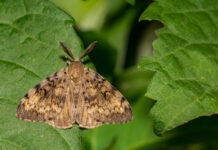
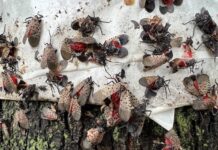
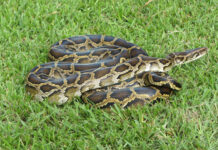
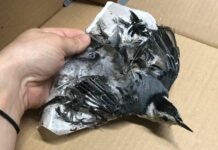

![[VIDEO] Dickies®: Discover Workwear That’s Anything But Uniform](https://turfmagazine.com/wp-content/uploads/2023/06/1647663814-4b1a2a7742790a9b1e97a3b963477850192e1d6a9dfba9b07214a77bae25d6e3-d-324x160.jpg)